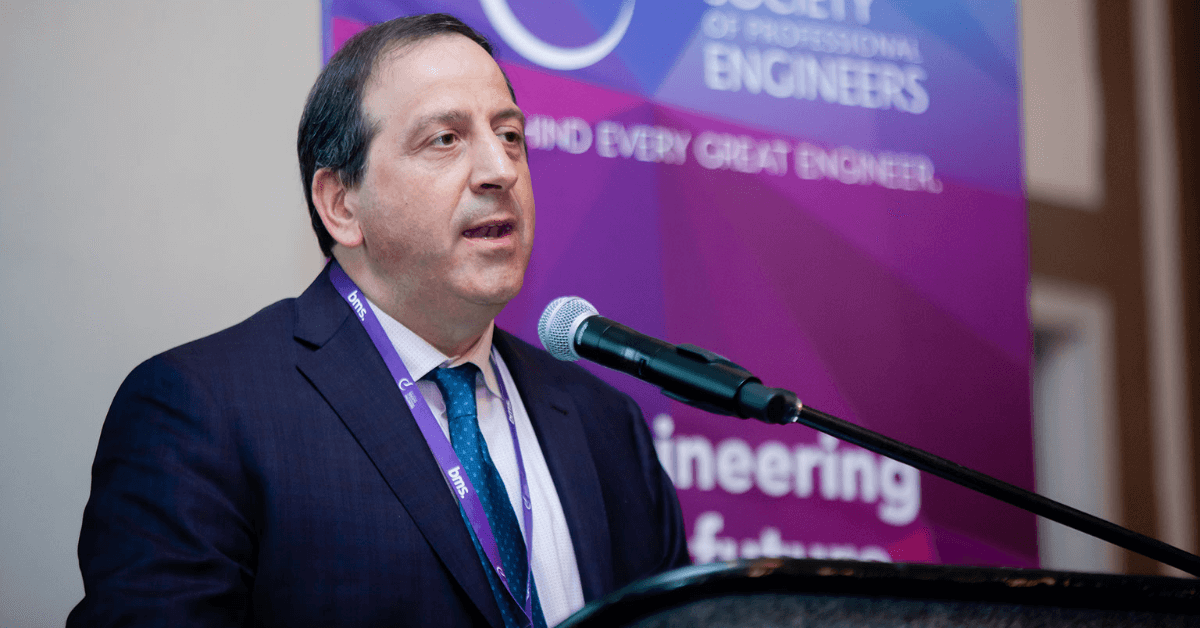Over the last decade, societal, environmental and economic issues have become more complex, and technology has continued to advance at a lightning-fast pace. Then in 2020, the world collectively faced one of the most debilitating viruses in a century that forced educational institutions, businesses, travel and tourism industries and every other staple of modern life to grind to a halt. In addition, the rise of a global anti-racism movement magnified the issues of systemic white supremacy, hate and discrimination in our society, with united calls for real change and advocacy, once and for all.
After a difficult year with many more obstacles still in front of us, now more than ever, we need leaders to help shape the economic and social recovery our province and country desperately need. As a society, we must ensure the changes and decisions we’re making enrich the lives of everyone, and don’t diminish our quality of living, or worse, harm us.
Engineers have the skills to do this. You are trained to think differently about the opportunities and challenges we face. Service is part of your ethos and providing leadership where it is desperately needed is the ultimate form of service.
Engineers also have a duty to protect the public and the environment. As the official voice of the engineering profession, OSPE’s role is to represent engineers and push the government to make the right decisions based on evidence. You have the extensive knowledge and expertise to develop solutions to the problems facing our province, our country and our world.
As the advocacy body for the engineering profession, OSPE needs your involvement and perspective. We are here to amplify your voice, so the decisions made today will benefit future generations.
Engineering the Future Episode 9
OSPE CEO, Sandro Perruzza went on our podcast to talk to host, Jerome James, P.Eng., about this subject and explained what OSPE’s 5-Step process to advocacy was. You can watch that episode here:
What does “advocacy” actually mean?
At OSPE, advocacy for the engineering profession means constantly reminding government, industry, media and the public that engineers are critical to the success of all aspects of Ontario’s economy and public welfare. As the only independent membership organization that represents the entire engineering community, including engineers, graduates and students, OSPE offers a platform for members to provide their leadership and influence for a better future for themselves, their organizations and society at large.
OSPE focuses on several key policy areas to truly instill in Ontarians that without engineers, Ontario wouldn’t work.
Step 1: Identifying the Advocacy issue
How do engineers determine which issues should take priority?
The advocacy process is one that requires thoughtful reasoning, strategic direction and critical analysis. Before moving forward with any issue, these skills are put into practice by OSPE’s five Task Forces and Committees made up of engineers who are subject matter experts in their field.
OSPE’s engineering community determines which issues are important through:
- Task Forces & Committees, as mentioned, made up of OSPE members focused on Diversity & Inclusion, Energy, Environment, Infrastructure, and Research & Innovation
- Broad based consultation with members through OSPE’s annual membership survey, needs assessments, online questionnaires, social media polls, OSPE events, etc.
- OSPE members who serve on the Board of Directors and provide strategic direction for the association
- Direct invitations to special stakeholder and government consultations where the engineering profession’s needs & societal benefits are determined and shared
For an issue to move forward in the advocacy process, it must satisfy certain requirements:
- It must be consistent with OSPE’s vision, mission, values and strategic pillars set forward by OSPE’s Board of Directors through its Strategic Plan
- It must be an important issue to OSPE members and the engineering community as a whole (professional engineers, engineering graduates, and/or engineering students)
- OSPE, through its advocacy process, must be able to affect a positive outcome for engineers and/or society
OSPE is a non-partisan association, and hence our goal, independent of the government in power, is to affect change and push politicians to make sound, evidence-based decisions. The trust that OSPE has nurtured with all levels of governments is based on this fundamental practice.
If the issue is properly aligned with these three requirements, then we further analyze whether the advocacy team moves forward with the problem at hand. This requires examining the following aspects:
- Is there a clear cost-benefit for members, potential members, and society in general?
- Is it worth the opportunity cost versus other priorities that OSPE is already committed to?
If we answer yes to these questions, then we move forward to step 2.
Step 2: Researching and clarifying the issue
OSPE conducts economic and sectoral research, labour market analysis and government policy evaluations through external research service providers, OSPE’s Senior Research Officer, partnerships with academic institutions and/or other organizations and associations, or through government-funded projects.
Conducting research helps to:
- Ensure we have collected data surrounding the topic
- Understand the key players and stakeholders involved and how the issue impacts them
- Identify whether this is a priority for the current government or opposition, and if and how they have committed to tackling the issue
Step 3: Consult the OSPE membership
Next, we attempt to answer the following questions:
- How does this issue impact OSPE members?
- Which segment of OSPE members?
- What particular industry or discipline of engineering?
- How does this issue impact the livelihood and pocketbooks of engineers?
- What do OSPE members know about this issue?
- What experiences have OSPE members had and what knowledge can they contribute?
- What do OSPE members believe are possible solutions?
OSPE uses online surveys, focus groups, e-newsletters, The Voice magazine, the Society Notes blog, events, direct e-mails, phone campaigns and the members-only ENGage Forum to gather feedback on any particular issue from OSPE members and the engineering community at large.
Step 4: Construct a Plan for Advocacy
Once a meaningful member consultation process has taken place, a course of action is selected based on timing and the ability to make the greatest impact. Possible steps include:
- Proactively engaging with government or other stakeholders to affect change by presenting research or recommendations – for example, release a report, commence a communications or government relations campaign. For example, OSPE’s report: Retail Electricity Price Reform: Path to Lower Energy Bills and Economy-Wide CO2 Emission Reductions.
- Having subject matter experts on one of OSPE’s Task Forces or Committees monitor the situation and prepare a response, as appropriate. For example, OSPE’s response to Ontario’s Low Carbon Hydrogen Strategy.
- Partnering with other allied organizations to determine a joint approach to respond and provide recommendations. This was done by OSPE, by partnering with the Residential and Civil Construction Alliance of Ontario (RCCAO), and the Ontario Sewer and Watermain Construction Association (OSWCA) to conduct a study of the condition of stormwater infrastructure and the type of asset management planning that is done in municipalities across Ontario.
- Refrain from immediate action and continue to monitor the file, if there is no current political appetite or the issue is not critically important to OSPE members at this time.
This decision will direct the course of our plan and determine the resources OSPE invests in advocating for a particular issue.
A clear plan will outline, in detail, the steps to follow in the short, medium and long-term, in order for OSPE to be successful in achieving its desired objective.
Step 5: Outline Key Stakeholders
A clear advocacy plan will outline the key stakeholders OSPE must interact with in order to achieve change. These will include government (municipal, provincial or federal), as well as industry partners or academia, depending on the issue at hand.
As an advocacy association, we know that it is important to present an issue that is clear and understandable to other stakeholders. Along with presenting a problem, OSPE also attempts to bring engineers and other subject matter experts together to discuss and develop potential solutions. Engineers have the knowledge, training and expertise that is key in answering society’s biggest problems.





Leave a Comment